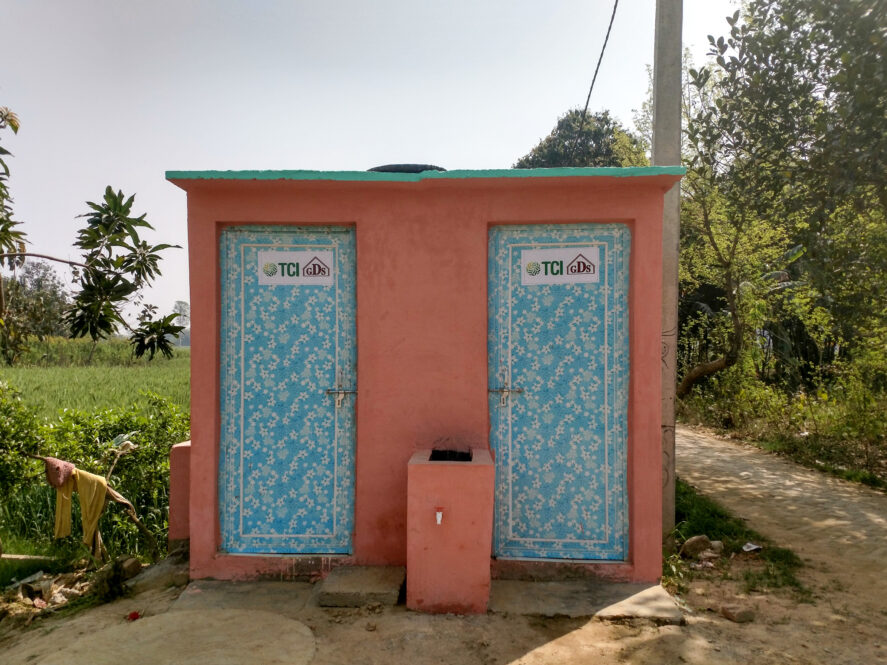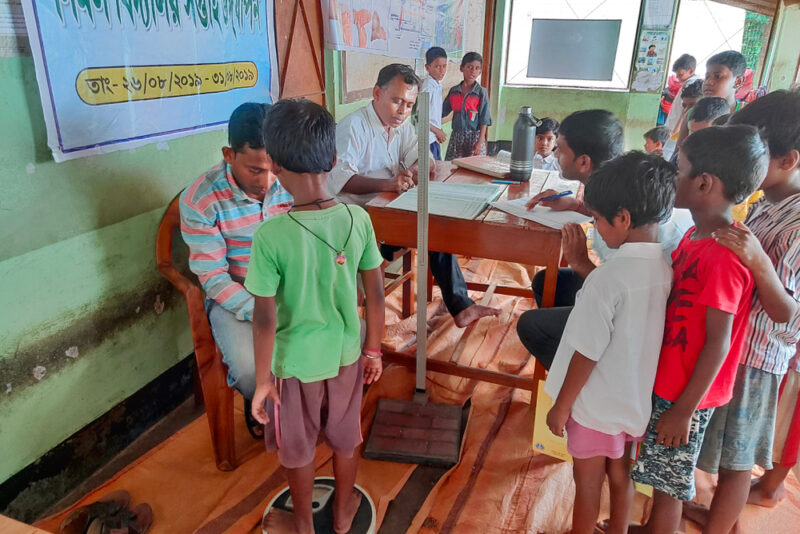Information Is Key to Making India Open-Defecation-Free

Solving a problem like open defecation is not as simple as installing toilets. In 2019, after decades of work, India scored a major developmental victory by providing 600 million people with access to toilets. But while the toilets were built, they are not all being used. According to a 2022 report from the WHO and UNICEF, 17% of rural Indians still practice open defecation.
A new study from the Tata-Cornell Institute for Agriculture and Nutrition (TCI) shows that education and awareness may be the key to reaching that 17%. The study, published in PLOS One, demonstrates that while subsidizing the cost of toilets achieves modest improvement in toilet usage, pairing subsidies with campaigns designed to raise awareness of the dangers of open defecation can effectively end the practice at the village level. It further shows that villages that end open defecation see marked improvements in child health.
To test the value of awareness campaigns for reducing open defecation, TCI researchers teamed with Grameen Development Services to conduct a trial across 15 villages in Uttar Pradesh, India. The villages were divided into three groups. In one group, households were offered subsidized toilets (TCI paid 75% of the cost). In another, households were offered subsidized toilets and received educational and awareness-raising programming about the benefits of toilet use and the dangers of open defecation. The third group received neither.

Payal Seth and TCI Director Prabhu Pingali visit one of the toilets constructed during Seth’s study. (Photo by Jonathan Miller)
In both the group that received subsidized toilets and the group that received both toilets and educational programming, toilet ownership increased significantly. However, there was a striking difference between the two in toilet usage. In the villages that were offered only subsidized toilets, open defecation decreased modestly from 95% to 52% at the end of the study. In the group that also received educational programming, there was a near-universal decline from 98% to 4%, virtually ending open defecation in those villages.
“Despite improved access to toilets, this research underscores that open defecation remains in rural India because many rural Indians lack the requisite information about the health risks the practice entails,” TCI Director Prabhu Pingali said. “When offered alongside toilet subsidies, awareness-raising is an extraordinarily effective tool for ending open defecation.”
The villages that received educational programming also experienced significant improvements in child health that the toilet-only villages did not. By the end of the study, the number of underweight children in the villages fell by 20%.
Researchers attribute the decline to a decrease in diarrhea. When children have diarrhea, their bodies are unable to absorb many of the nutrients in the foods that they eat, causing weight loss and contributing to micronutrient deficiencies. In the study villages where open defecation was eliminated, the number of reported diarrhea cases shrunk by 28%.
“Sanitation is a valuable pathway for improving nutrition and overall health, especially in children,” lead author and TCI alumna Payal Seth said. “Ending open defecation not only protects against infection and disease, it also offers long-term health benefits.”
India has long struggled to end open defecation, which still persists mostly in rural areas. Its efforts have primarily focused on addressing the cost of toilets by subsidizing their construction. In 1999, India launched the Total Sanitation Campaign to improve toilet access. The program was reformed into the Swachh Bharat Mission (Clean India Mission) in 2014. Behavior change activities increased under the restructured program, but were reportedly coercive rather than persuasive. Studies of both programs show only modest progress in toilet use.
Experts believe that open defecation persists because it is deeply entrenched in rural communities, which often lack information about the risks resulting from the behavior. Open defecation can lead to the contamination of water, food and surfaces, increasing the risk of diarrhea and other infections. In addition to the immediate danger caused by such illnesses, open defecation also poses long-term health risks, especially to children, who can become malnourished due to repeated infections, resulting in diminished growth and suboptimal cognitive development. If even a small fraction of people in a community openly defecates, the entire village can be exposed to infection.

Payal Seth teaches a boy how to properly wash his hands as part of the behavior change campaign component of her study. (Photo by Jonathan Miller)
To persuade the households in their study to build and use toilets, TCI researchers used a tried-and-true behavior change campaign called community-led total sanitation, which was designed to improve sanitation and hygiene practices in developing countries. The first component of the campaign is a “triggering session” intended to shock participants and demonstrate the danger of open defecation. During the session, members of the community are brought to one of their routine places of defecation, where a facilitator places a strand of hair in the excreta before dipping it in a glass of water and offering it to the participants to drink. Disgusted, they refuse. The facilitator then explains how flies that land in the excreta could land on their food or water just like the hair, exposing them to pathogens from human waste.
Following the triggering exercises, temporary toilets were provided to all community members. Facilitators also provided instruction on handwashing and led action-planning sessions where community members devised their own sanitation solutions. After 4–5 months, permanent toilets were installed for households that elected to use the subsidy.
Based on their results, the researchers said that sanitation campaigns should incorporate persuasive behavior change components along with interventions to make toilets more affordable. They also said that their study should convince policymakers of the importance of sanitation to overall efforts to improve children’s health and nutrition. The World Health Organization estimates that for every dollar invested in sanitation, households save $4 in avoided medical costs from infections, reduced mortality and enhanced labor productivity.
“Our results strengthen the economic rationale for going beyond traditional diet-based policies to investing in an improved sanitary environment to safeguard nutritional wellbeing and healthy child development,” Seth said.
Featured image: As part of Payal Seth’s study, TCI partnered with Grameen Development Services to build subsidized toilets for some of the participant households. (Photo by Payal Seth/TCI)





